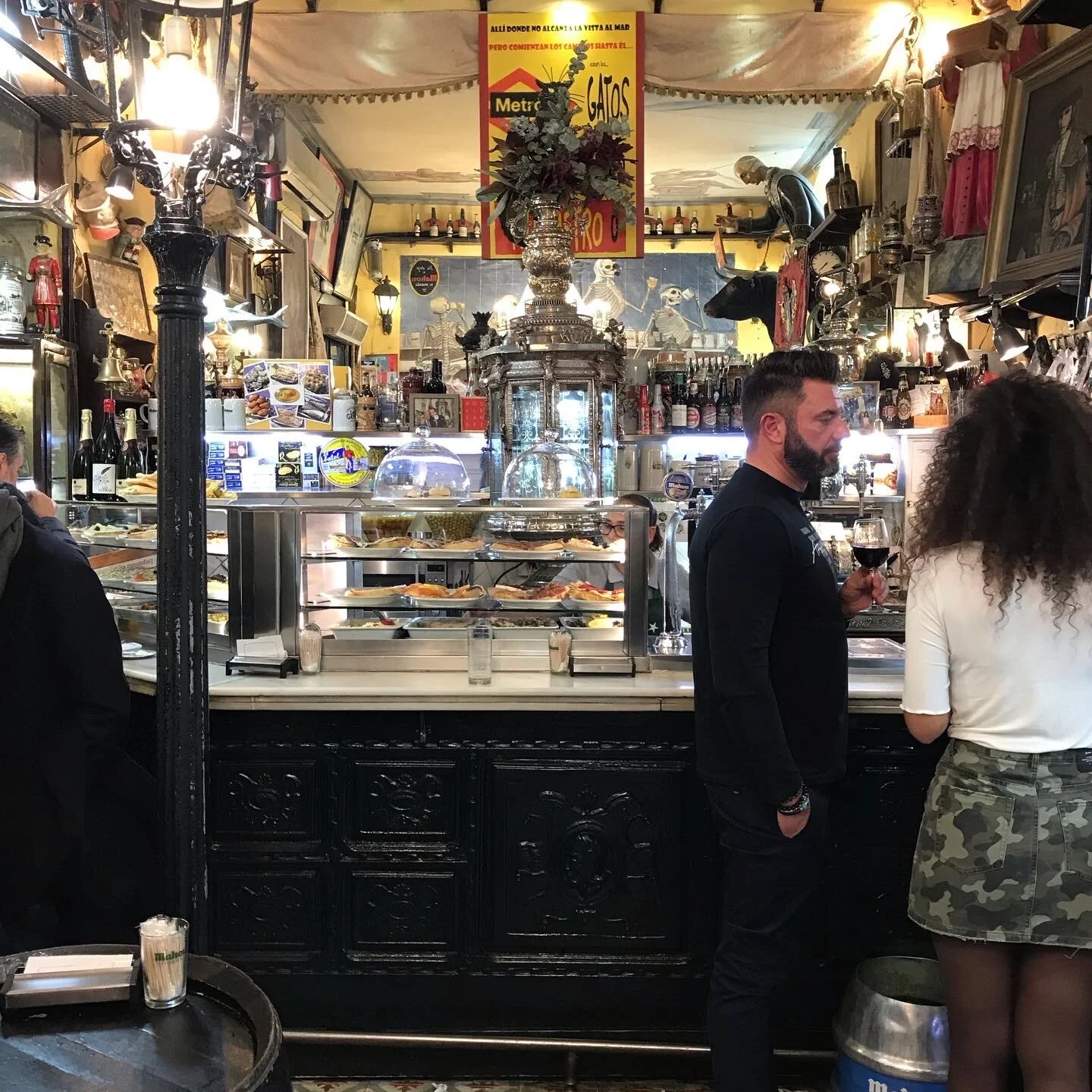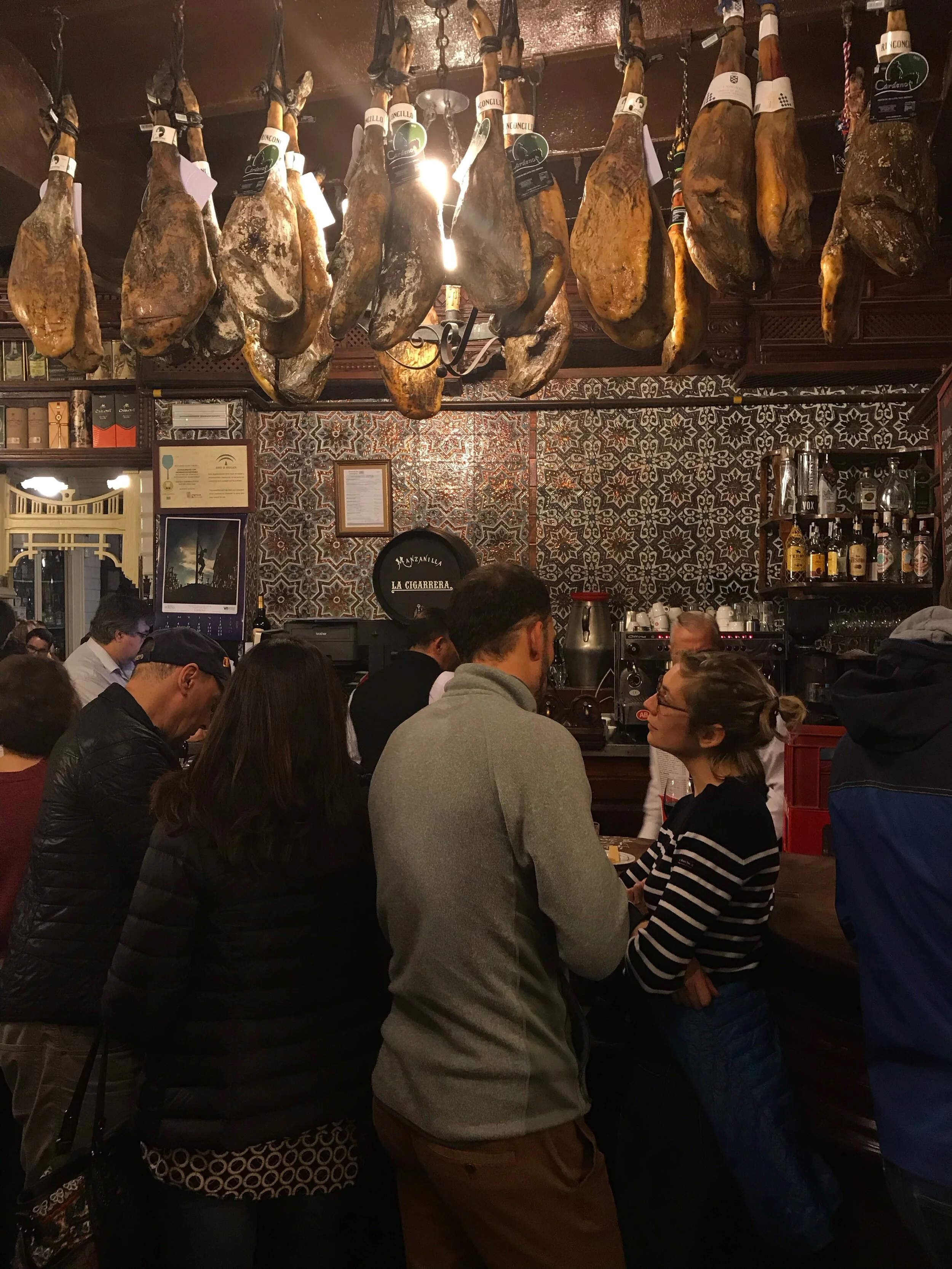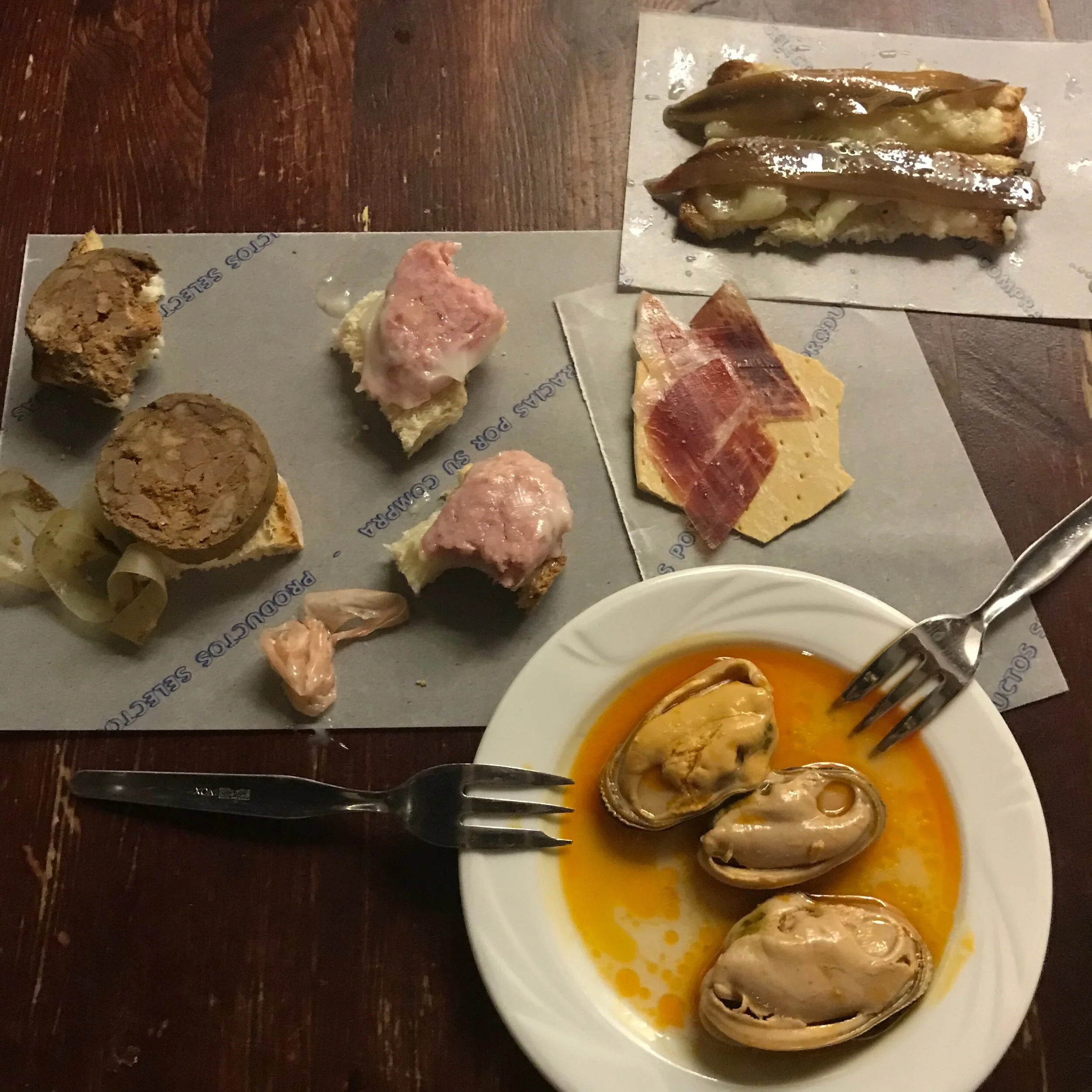Talking (Over) Tapas
Los Gatos, Madrid
Tapas, though trendy now for some time in the United States, are much more than the small-plate solutions to a food-lover’s indecision they’re made out to be. Yes, they are perfect bites, made more perfect accompanied by a wine, beer, or sherry, and ideal for a shared meal with friends (like sticking to the appetizer menu at Chili’s, the small sizes and relatively low cost mean you can explore a variety of tastes, textures, and temperatures sure to satisfy everyone). But the true nature of tapas goes beyond the gastronomic. The ritual of eating tapas – yes, like facing Mecca or crossing oneself, tapas are rite and religion here in Spain – is emblematic of Spanish culture as a whole, where cerveserías and cafeterías function as community centers around and within which all of life unfolds.
Most typically enjoyed before actual mealtimes – a midday break before lunch, and in the evening before or in lieu of dinner – tapas are eaten almost incidentally, as if only because one happens to be at a bar which happens to serve food (though obviously, given the daily nature of these routines, these wine fueled snack breaks are anything but incidental).
Plates appear at tables a few at a time, usually with every round of drinks, a never ending parade of saucers, earthenware, and bowls. Gathered around, small groups of Spanish – the same as yesterday – are either standing at the bar inside or reclining in plastic chairs around folding tables out on the sidewalk. You know they are Spanish because 1.) foreigners and tourists have eaten already (whatever the meal, the Spanish lag by about 3 hours compared to the rest of the world) and 2.) they’re wildly gesticulating, toothpicks used for picking up the small bites thrust like lances into the air. They discuss politics and the weather with equal voracity, talking over each other between mouthfuls of manchego, shrimps glistening with peppery oil, and papas bravas (fried potatoes with paprika aioli). Arguments about fútbol accompany the olives, and hushed parish drama is passed along with the napkins used to wipe oily fingers, and just as quickly balled up and forgotten on the floor. Family affairs (usually to do with the grandkids) are shared to unrestrained joy or scornful tutters, and accordingly toasted or washed down with everyones drink of choice. Most people, by meals end, won’t have even considered the food, short of quickly ordering everyones favorites at the outset. For going out is the objective, to catch up with family and friends, eating and drinking only its natural byproducts.
Which isn’t to say the food is an afterthought. In fact, it’s most often excellent, with a focus on high quality ingredients locally sourced. But, like a good recipe, going out for tapas is a sum of its parts, of which the food is only one. For the beauty of tapas is in immersing yourself in the city, of getting to know a neighborhood or village, it’s movement and its people. It’s about the din of conversation over clinking glasses and about laughing with each other across a table littered with crumbs and pits, sardine bones and wine stains.
Most of all, tapas aren’t about eating a meal comprised of small plates, but rather, accidentally finding yourself full after a few hours of lively conversation, drinks, and one toothpick after the other of irresistible bites.



